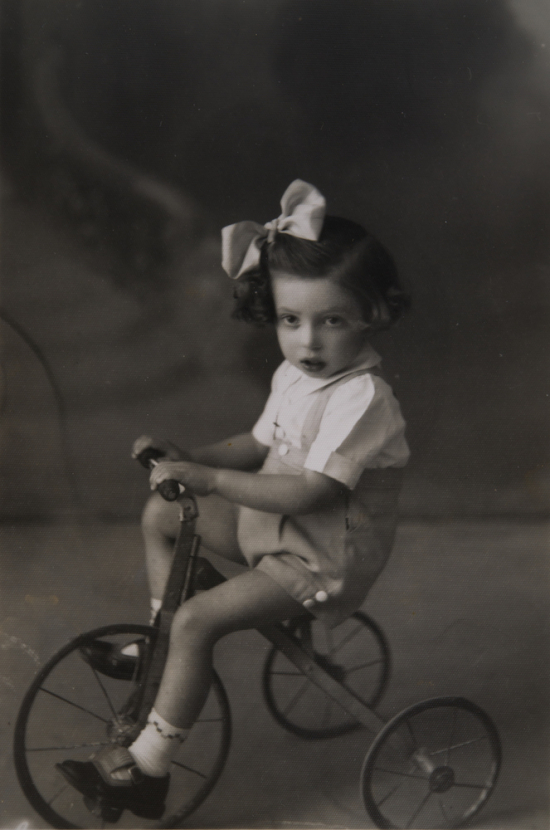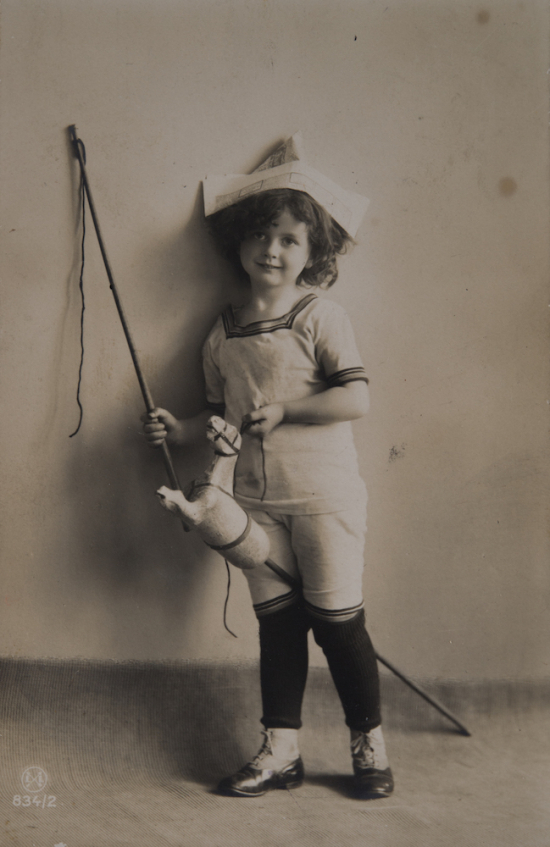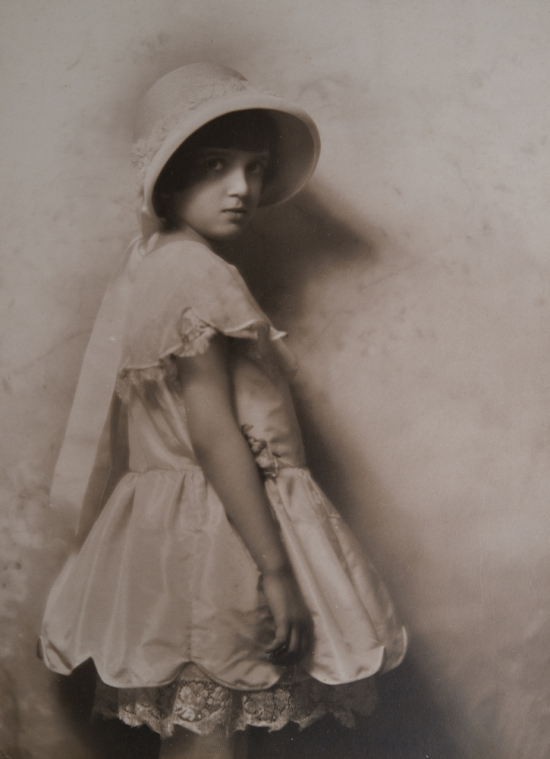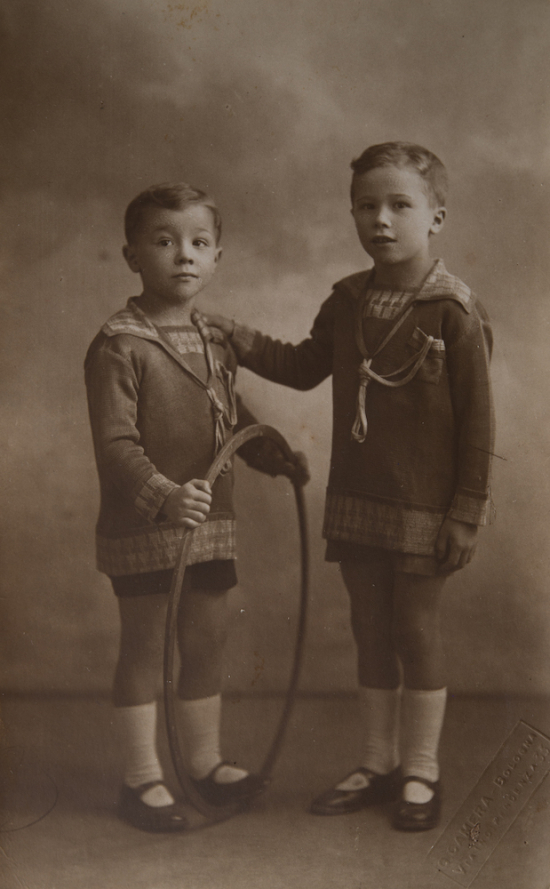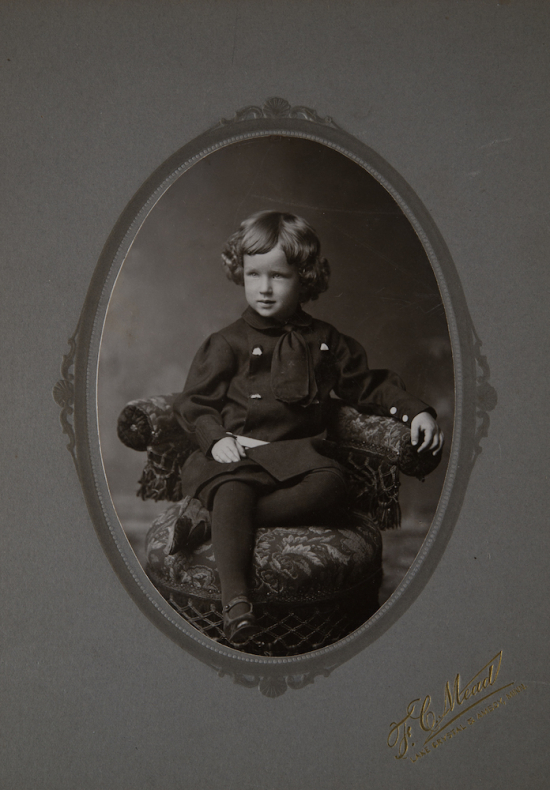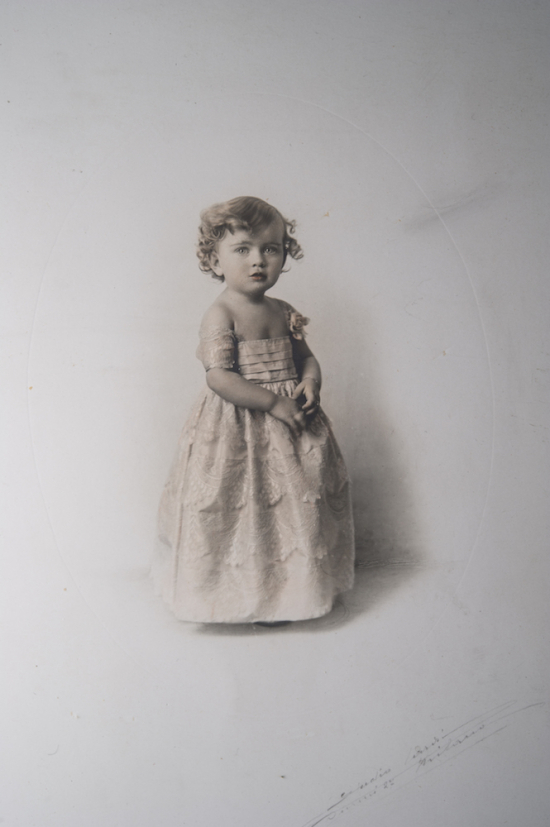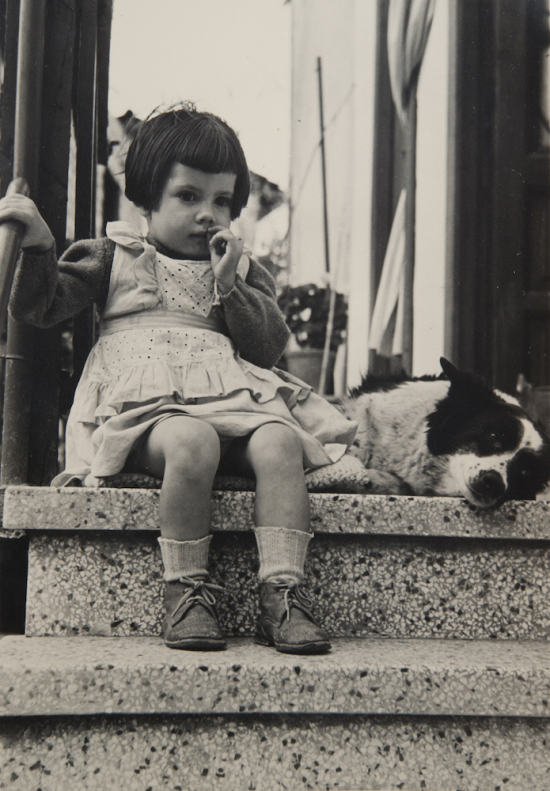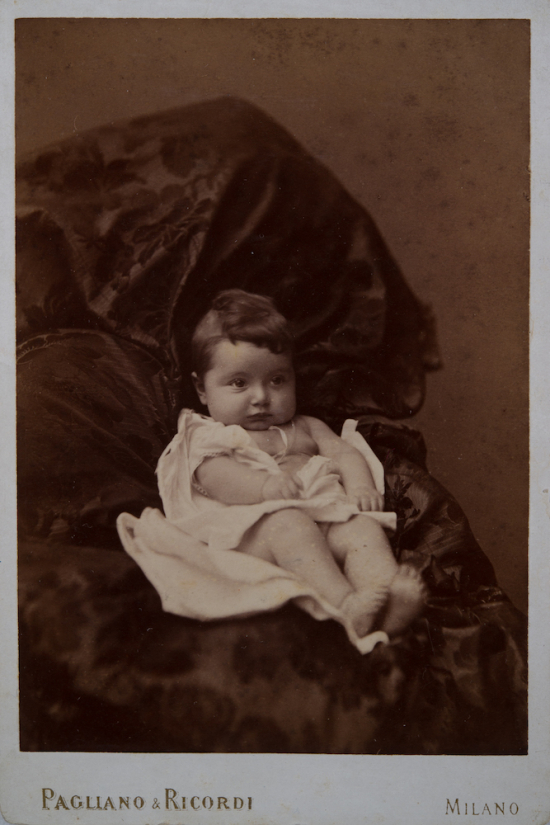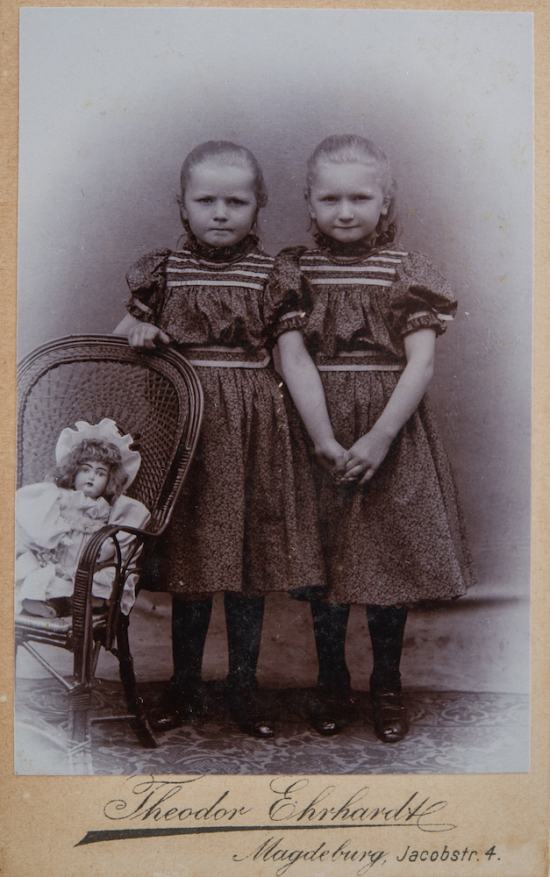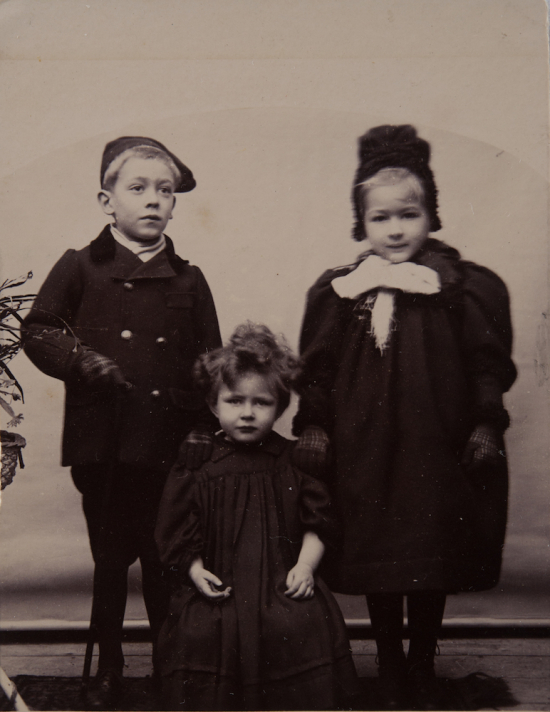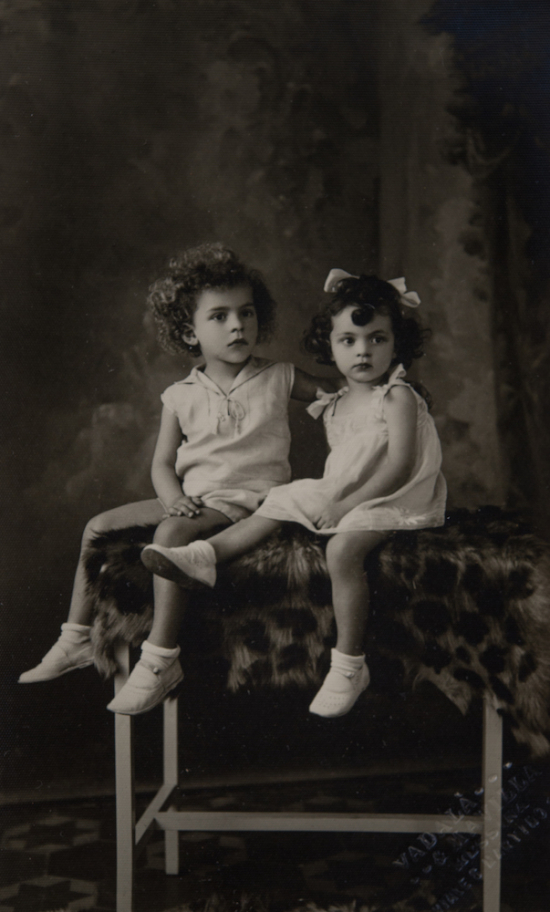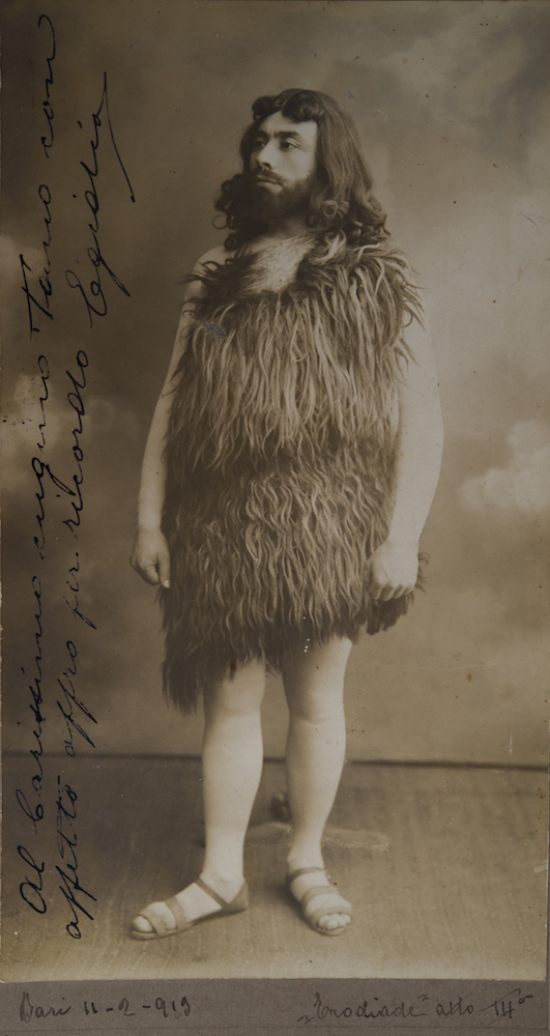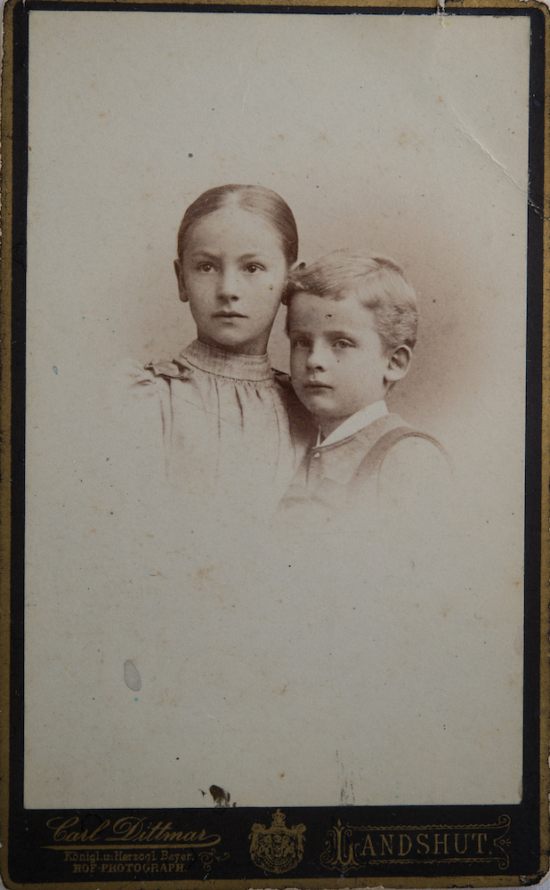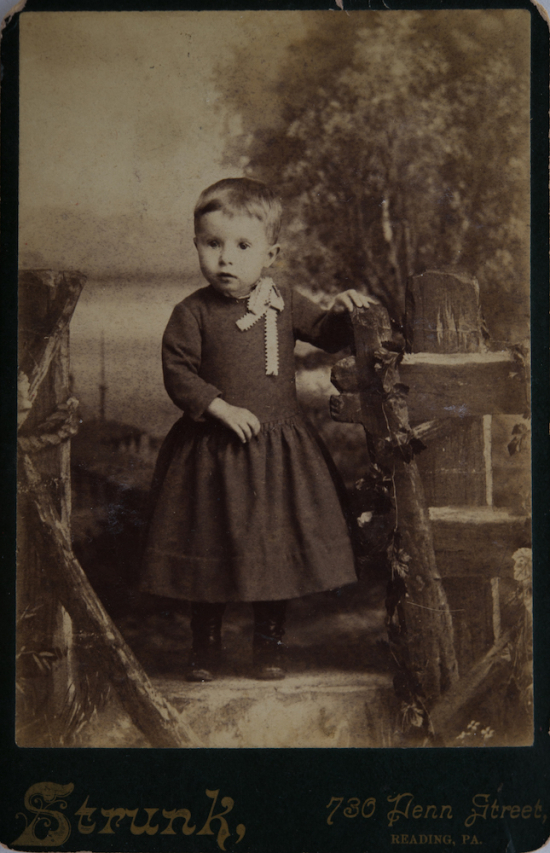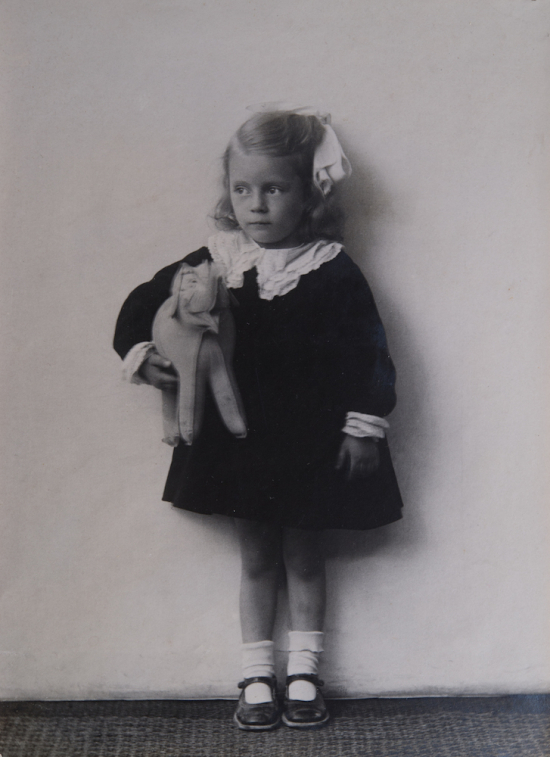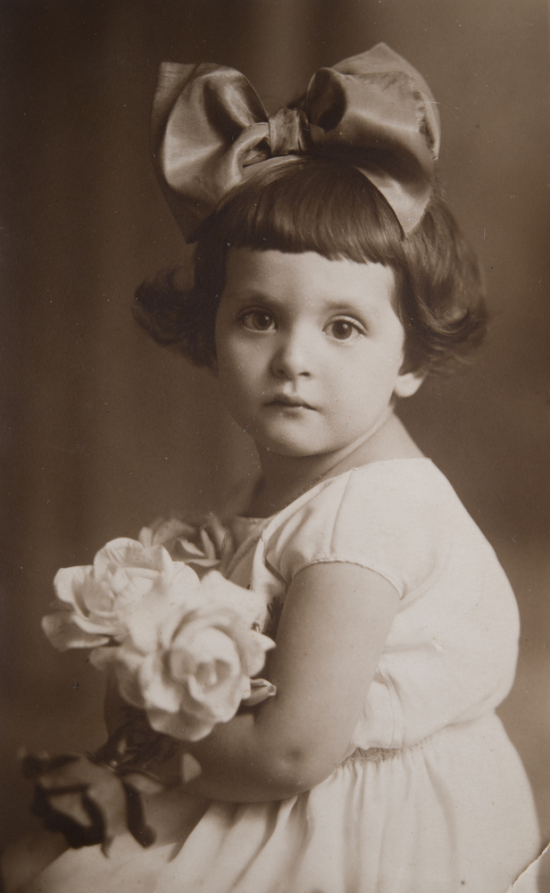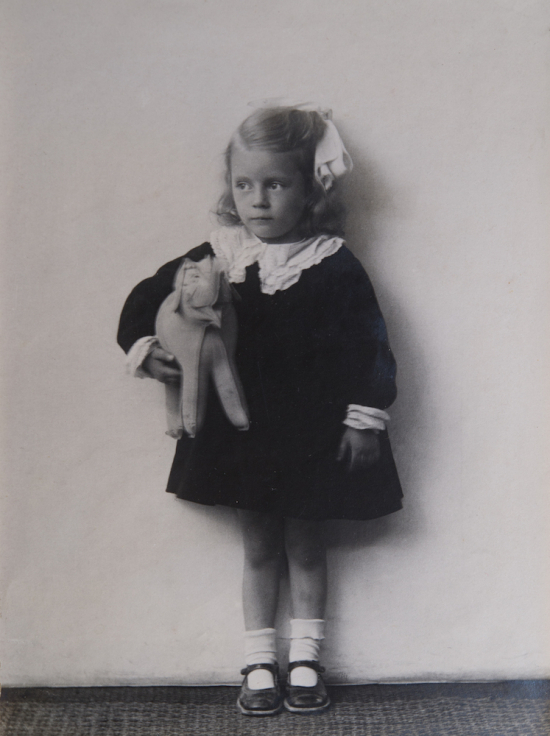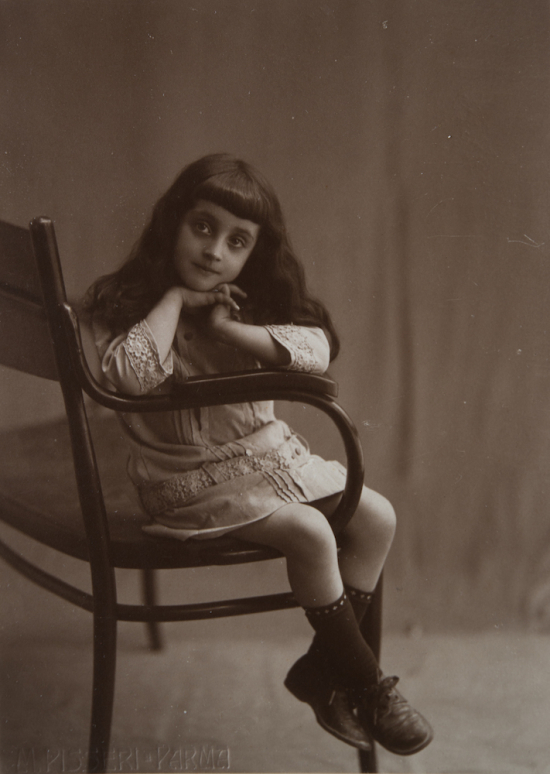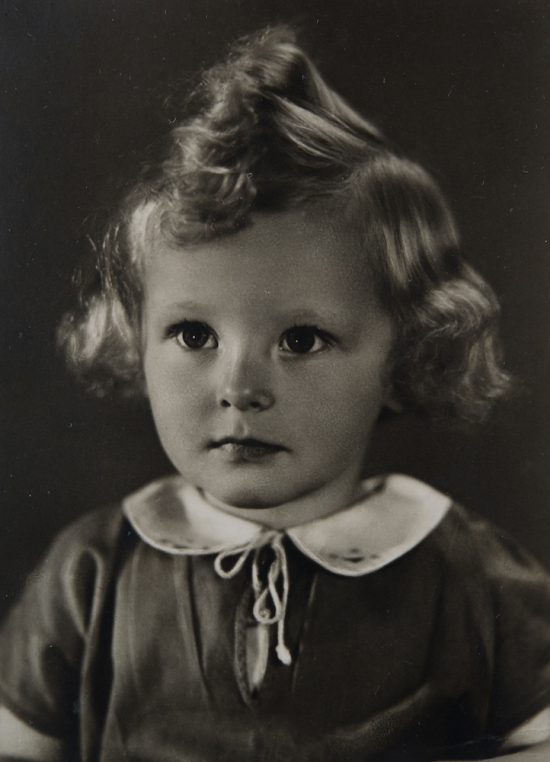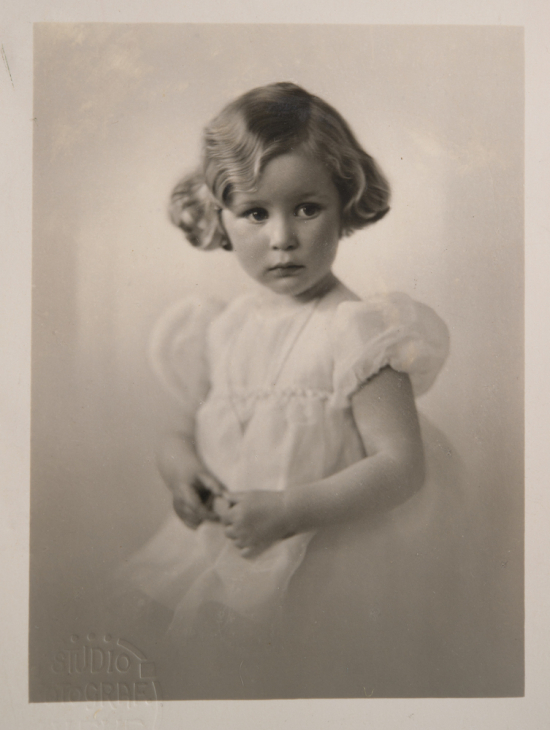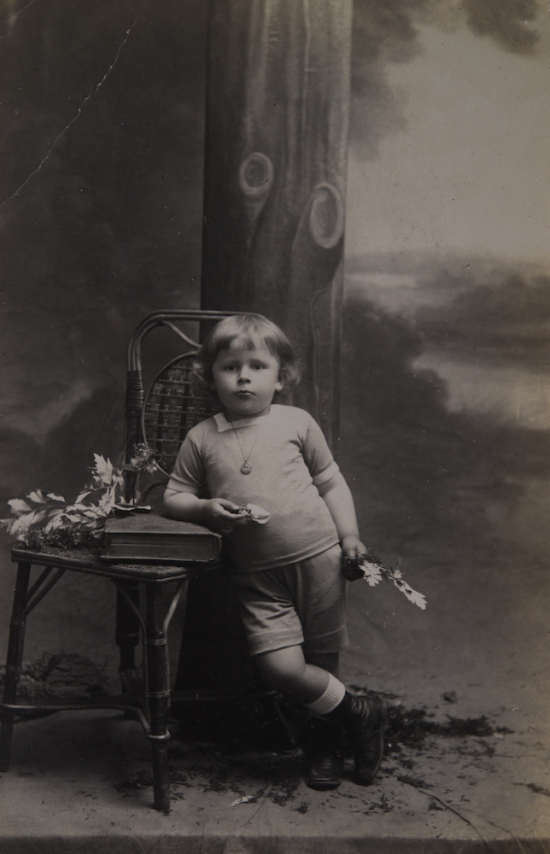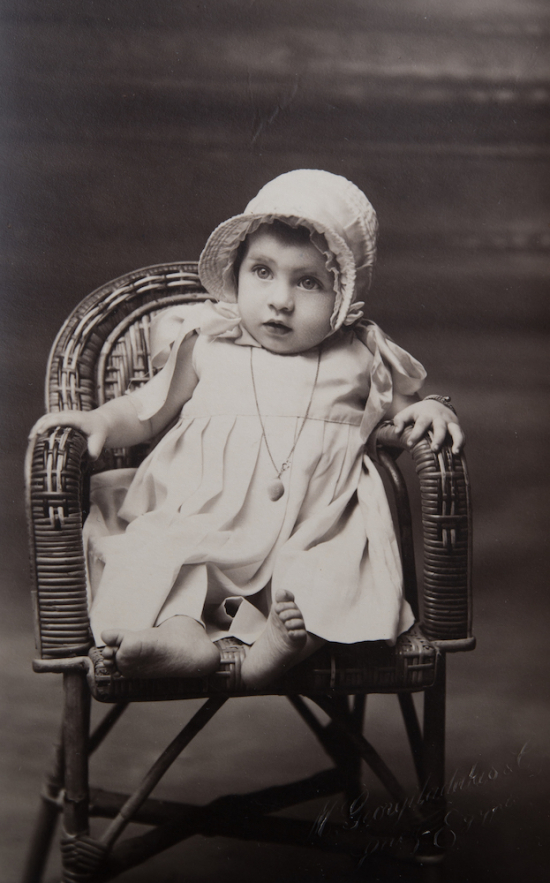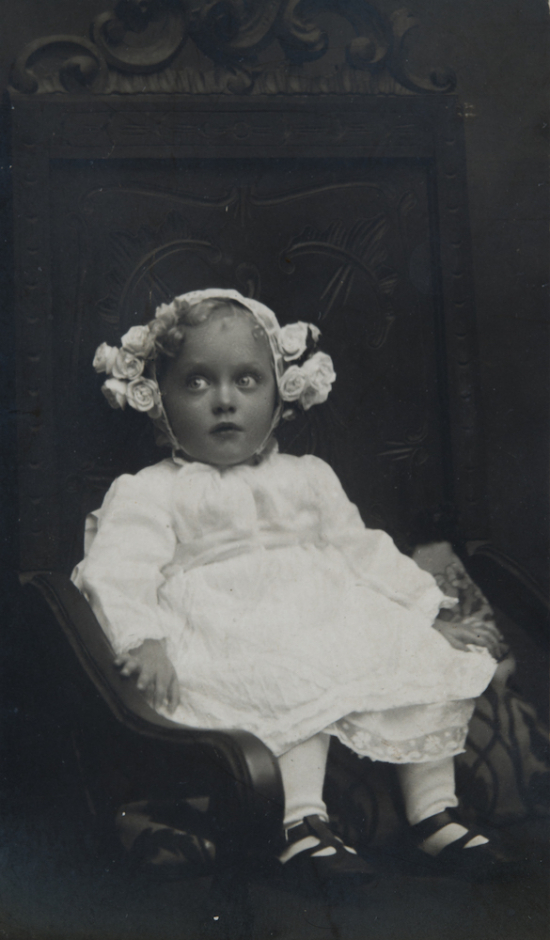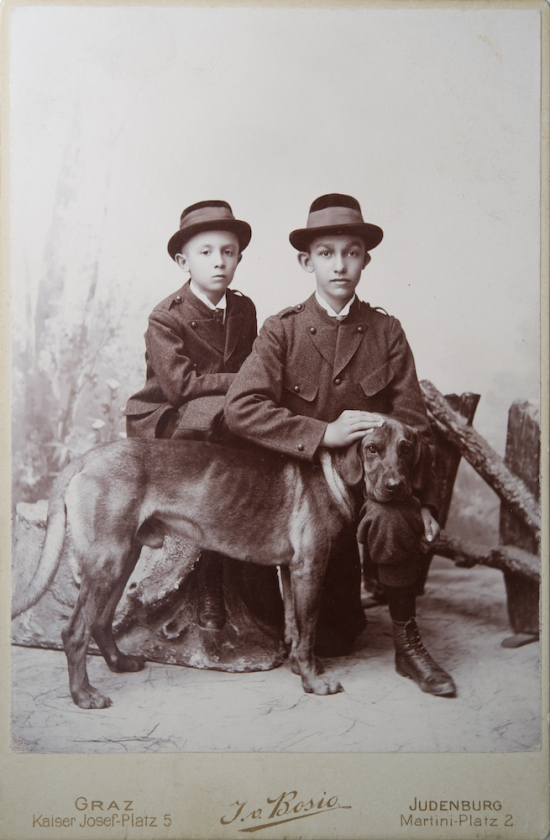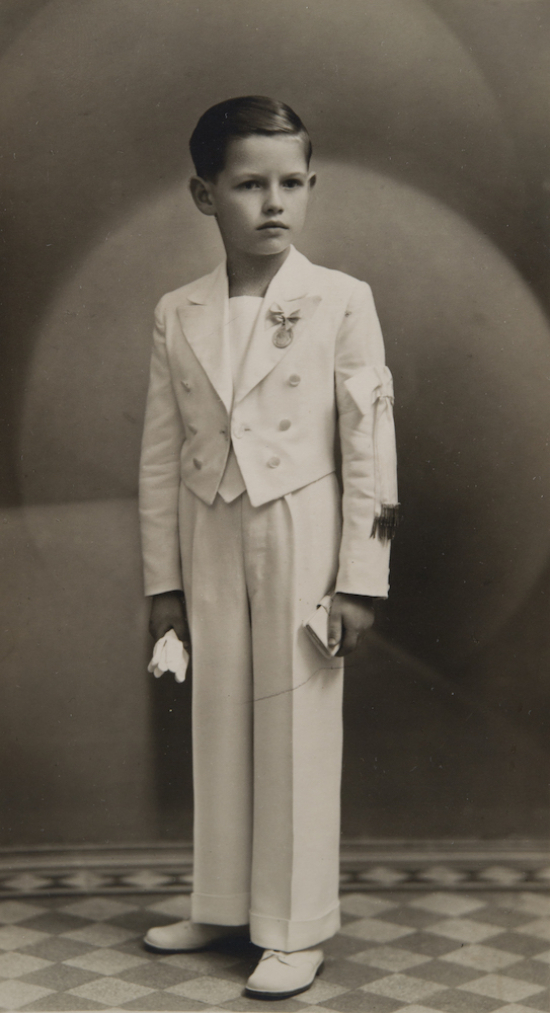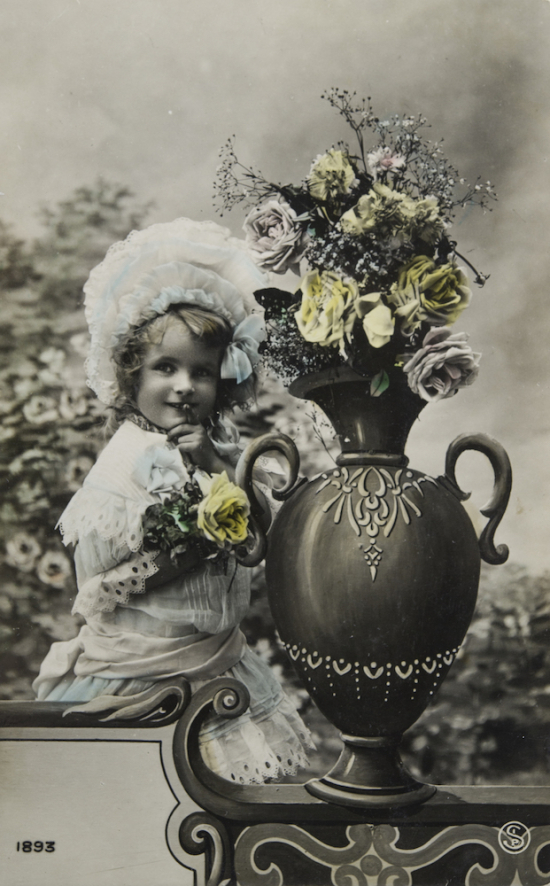LEARDINI ARCHIVE
by Giuliana Bonavida
During the last years Selena Leardini has been collecting and treasuring photos of little boys and girls. The images, accurately selected, become the subject of her paintings – transformed, moved to the present, but still completely true to their period, to their gaze.
The oldest shots date back to the second half of the XIX century, the most recent ones to the interwar period, in the XX century. Each and every finding is a true encounter, strengthening the apparently impossible relationship between adult age and childhood – those distant little girls and boys reduce the distance between what we are now and what still remains of what we used to be. Among all these encounters, there are some very special ones. Over time the collection has become more and more independent and autonomous, merging into the Leardini Archive, a collection of daguerreotypes, ambrotypes, tintypes, prints from negative films, with something like 700 pictures and counting.
This careful work of discovery and collection tells the story of a fascination that, on the one hand, brings us back to a distant past and, on the other, reconfirms, in the present day, a multitude of tender and resounding correspondences. A far away past starts to evoke back its moments thanks to the strength emanating from a century old child portrait, thanks to its profound meaning.
The viewer seems to experience a single, absolute event – amazement and fear, lightheartedness and forced restraint concentrate in the gazes and, in a sort of magic jump, they hit our own gaze and stare back at us. When magic works, it takes our breath away and there’s no way out.
It is of course necessary to surrender to this game, and suspend any attempt of historical reflection, of sociological or technical investigation. And, in a merely aesthetical dimension – where the senses are not guided but free to resonate – venture in the dimension of inter-est, of staying with the image in a complicit commonality, cohabit and converse, and marvel to be in the same place.
The collection is organized in several recurring main groups that have been characterizing the posed photography of children since its origins and still today. Models, backgrounds, settings, props and poses tend to be repeated. Anyway, there are relatively few photographs shot after the 1930s. The original aura is gradually disappearing, the gazes reveal a new consciousness related to the camera, the exponential proliferation of images seems to weaken and even to cancel the mystery that can still be seen in the eyes of those children of the past.
Beside the individual portraits, from the first days of life up to the puberty, we can detect some recurring series:
HIDDEN MOTHERS
Portraits of little girls and boys, often babies, held by their mother or some other adult who is not going to appear in the final image. This directly relates to the difficulty of keeping the subjects still for the long time needed for the exposure, avoiding the blur caused by even the subtlest movements. If the adults didn’t manage to perfectly hide behind curtains and cloths, the photographer added or removed some details, overlaying a painted background to the person that had to be concealed, masking parts of the image or focusing on the children.
A possible justification for these photos may be the high rate of child deaths or XIX century focus on individuals, but this doesn’t explain it all. Linda Fregni Nagler presented at the 2013 Biennale a collection of images entitled “The Hidden Mother”. Geoffrey Bachten, author of the essay in the publication, doesn’t seem to be satisfied with historical and sociological motivations and – by launching a complex series of considerations – he maintains that, if the mother is to be seen, it’s because she “Shows off her hiding”.
(Linda Fregni Nagler, The Hidden Mother, MACK 2013)
BOYS IN FEMALE CLOTHES
During the Victorian age boys often wore female clothes and sometimes jewels when posing. This only happened in the early years of life. The grand staging of the photos included decorated backgrounds, luxurious furniture and sumptuous clothes. Female clothes were perhaps considered more suitable for the dramatic, magical rooms of the photographers.
TOYS – PETS
Toys are often part of the scene, as children were often portrayed with symbolic objects related to childhood – dolls, hoops, balls and puppets. Only rarely – and more recently – did the subjects interact with the objects. They often held toys but didn’t play with them. And in spite of this, the images don’t look at all like a stereotype – even in their fixity they suggest a profound relationship between subject and object. The same happens in the photos with pets, which seem to be completely absorbed by the scene.
Beside these main groups there are some rare POST MORTEM images, clearly and effectively showing the heartbreaking attempt to bring back spontaneity, to capture a sweet sleep.
Some other photos portray BROTHERS AND SISTERS of different ages, or TWIN SISTERS OR BROTHERS.
LEARDINI ARCHIVE
Exhibition of the private collection of posed photographs of children only and works by Selena Leardini during Bologna Art City 2019
From 31st January to 17th March 2019 Galleria Mirabilia, via de’ Carbonesi 3/e centre of Bologna
VERNISSAGE with the artist on Thursday 31st January at 6 pm.

